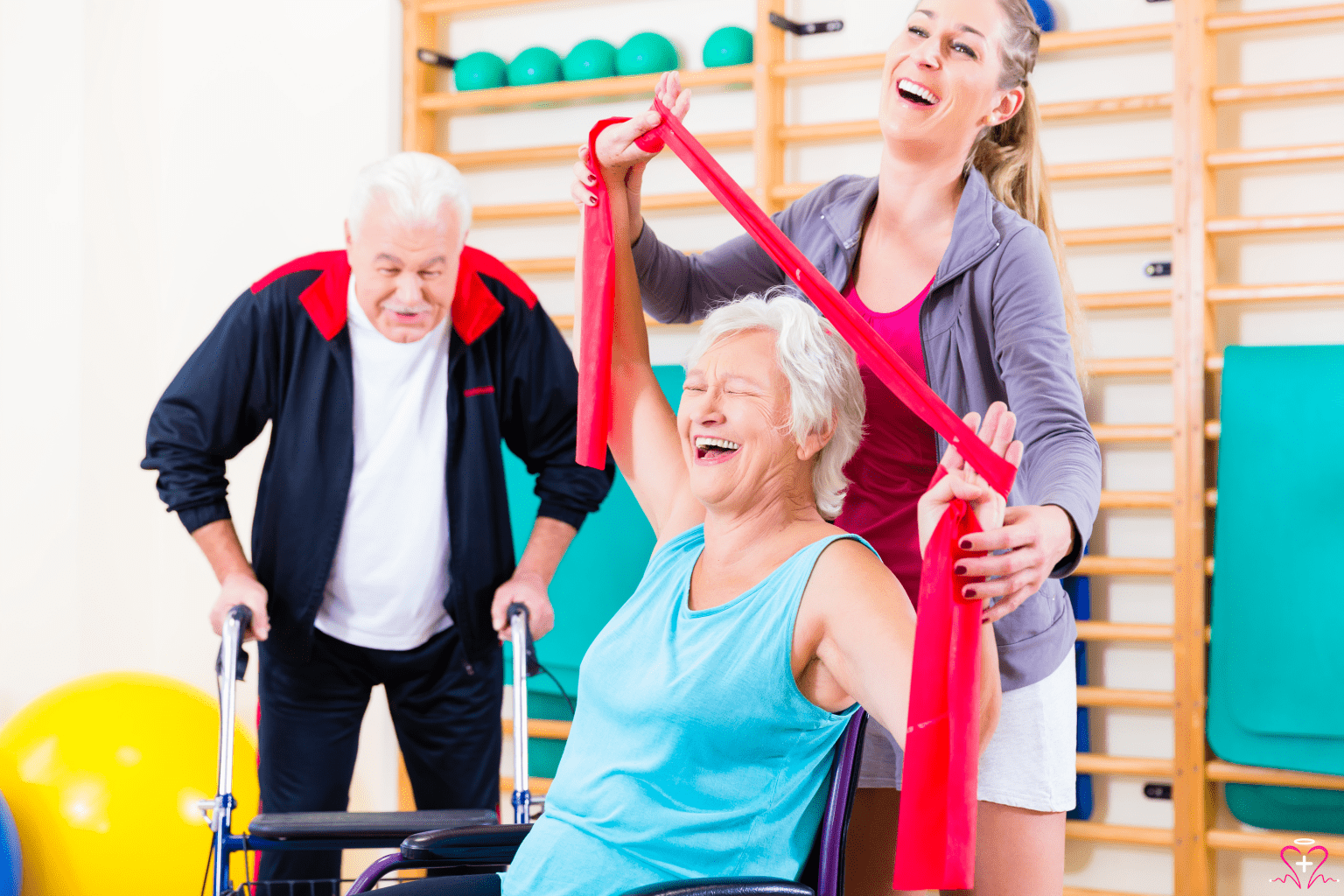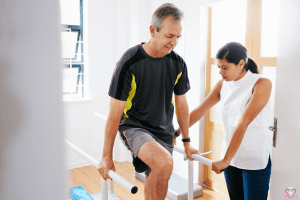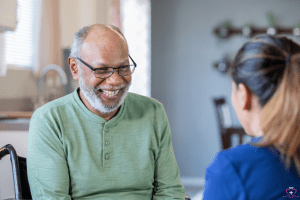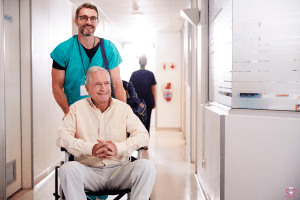The Benefits of Physical Rehabilitation Therapy
Physical rehabilitation therapy is a cornerstone of recovery for many individuals.
It plays a pivotal role in restoring function, improving quality of life, and promoting overall wellness.
This article delves into the multifaceted world of physical rehabilitation therapy. It aims to illuminate its benefits, the professionals involved, and the various therapies offered at rehabilitation centers.
This article is a comprehensive guide for patients seeking therapy, medical professionals, and those considering a career in this field.
We will explore the role of physical rehabilitation in recovery from injuries and surgeries and its impact on chronic conditions.
We will also discuss the importance of choosing the right rehabilitation center and the factors influencing this decision.
Lastly, we will explore career opportunities in physical rehabilitation and provide an overview of this field’s average salary and growth potential.
Join us as we explore physical rehabilitation therapy, its benefits, and its significant role in healthcare.
Understanding Physical Rehabilitation Therapy
Physical rehabilitation therapy, often referred to as physical therapy, is a branch of healthcare that focuses on restoring and improving body function.
The patient-centered approach involves diagnosing, treating, and preventing disabilities and movement dysfunctions.
Physical rehabilitation therapy encompasses a wide range of interventions, including but not limited to:
- Manual therapy techniques
- Therapeutic exercises
- Electrotherapy
- Hydrotherapy
- Patient education and counseling
These interventions aim to alleviate pain, improve mobility, enhance physical strength, and promote optimal function.
Physical rehabilitation therapy is not limited to any specific age group. It caters to individuals across the lifespan, from infants to older people.
It is a crucial component of patient care, whether in hospitals, outpatient clinics, rehabilitation centers, or home health settings.
Explore Senior Care ServicesThe Role of Physical Medicine & Rehabilitation
Physical Medicine and Rehabilitation (PM&R), or physiatry, is a medical specialty that focuses on enhancing and restoring functional ability and quality of life.
Physiatrists, or PM&R physicians, are experts in nerves, muscles, and bones. They diagnose and treat acute and chronic pain and musculoskeletal disorders.
They work closely with a team of healthcare professionals, including physical therapists, to create a comprehensive, patient-centered treatment plan.
Interdisciplinary Approach in Rehabilitation
Physical rehabilitation therapy is often part of an interdisciplinary approach to patient care.
This approach involves collaboration among healthcare professionals, such as physicians, nurses, occupational therapists, and speech therapists.
The goal is to provide holistic care that addresses the patient’s physical, emotional, and social needs. This collaborative approach ensures that all aspects of a patient’s health are considered and addressed in their rehabilitation plan.
Types of Physical Rehabilitation Therapies
Physical rehabilitation therapy encompasses a wide range of specialized treatments.
These therapies are designed to address specific conditions or injuries and are often tailored to the patient’s needs.
Some of the most common types of physical rehabilitation therapies include:
- Orthopedic Physical Therapy focuses on the musculoskeletal system and conditions such as arthritis, fractures, and sprains.
- Neurological Physical Therapy: This is designed for patients with neurological disorders or diseases, such as stroke, spinal cord injury, or Parkinson’s disease.
- Geriatric Physical Therapy: This caters to the needs of older adults, addressing conditions such as osteoporosis, arthritis, and Alzheimer’s disease.
- Cardiovascular and Pulmonary Rehabilitation: This helps patients with heart or lung diseases improve their endurance and functional independence.
Specialized Therapies at Rehabilitation Centers
Physical rehabilitation centers offer a variety of specialized therapies.
Trained professionals with expertise in specific rehabilitation areas deliver these therapies.
For instance, a patient with a spinal cord injury may receive therapies such as gait training, strength training, and balance exercises.
Similarly, a patient recovering from a stroke may benefit from therapies that improve motor skills, speech, and cognitive function.
Spotlight: Knee Rehabilitation Exercises in Physical Therapy
Knee rehabilitation exercises are a crucial part of physical therapy for patients recovering from knee surgery or injury.
These exercises help restore strength and mobility to the knee, facilitating a quicker and more effective recovery.
The Impact of Physical Rehabilitation on Recovery and Wellness
Physical rehabilitation therapy plays a pivotal role in the recovery process.
It aids in restoring function, improving mobility, and enhancing patients’ overall quality of life.
The benefits of physical rehabilitation therapy extend beyond physical recovery.
It also contributes significantly to the psychological well-being of patients, helping them regain confidence and independence.
The impact of physical rehabilitation therapy on recovery and wellness can be summarized as follows:
- Enhances physical function and mobility
- Improves quality of life
- Facilitates quicker recovery from injuries or surgeries
- Reduces pain and discomfort
- Promotes independence and self-sufficiency
- Boosts mental health and emotional well-being
Chronic Conditions and Quality of Life Improvements
Physical rehabilitation therapy is particularly beneficial for patients with chronic conditions.
Conditions such as arthritis, stroke, or Parkinson’s disease can significantly impact a patient’s quality of life.
Through targeted therapies, physical rehabilitation can help manage these conditions, improve function, and enhance the patient’s overall well-being.
Pain Management and Reduction Techniques
Pain management is a crucial aspect of physical rehabilitation therapy.
Physical therapists can reduce pain and discomfort through various techniques, such as manual therapy, electrotherapy, and exercise.
This not only aids in the recovery process but also improves the patient’s quality of life by reducing their reliance on pain medication.
Advanced Technology in Physical Rehabilitation
The field of physical rehabilitation therapy has seen significant advancements in technology.
These advancements have revolutionized how therapy is delivered, making it more effective and efficient.
Virtual reality, robotics, and wearable devices are now commonly used in physical rehabilitation centers.
These technologies enhance the effectiveness of therapy and improve patient engagement and motivation.
The Role of Evidence-Based Practice
Evidence-based practice is a cornerstone of physical rehabilitation therapy.
It involves the integration of the best available research evidence with clinical expertise and patient values.
This approach ensures that the therapies and interventions used in physical rehabilitation are practical and tailored to each patient’s individual needs and preferences.
Choosing the Right Physical Rehabilitation Center
Selecting the proper physical rehabilitation center is crucial in your recovery journey.
The center you choose can significantly impact your therapy’s effectiveness and overall recovery experience.
Here are some factors to consider when choosing a physical rehabilitation center:
- The qualifications and expertise of the staff
- The types of therapies and services offered
- The use of advanced technology and evidence-based practices
- The center’s reputation and patient satisfaction ratings
- The center’s location and accessibility
Factors to Consider When Searching for “Physical Rehabilitation Centers Near Me”
When searching for “physical rehabilitation centers near me,” consider the center’s proximity to your home or workplace.
However, location should not be the only factor in your decision.
You should also consider the quality of care, the range of services offered, and the center’s reputation.
Highlight: Physical Rehabilitation and Wellness Center of Spartanburg
Spartanburg’s Physical Rehabilitation and Wellness Center is a prime example of a high-quality rehabilitation center.
They offer a wide range of services, utilize advanced technology, and have a team of highly qualified professionals.
The Professionals Behind Your Therapy
A team delivers physical rehabilitation therapy of highly skilled professionals.
Each team member plays a crucial role in ensuring the success of your therapy.
The team typically includes physical therapists, occupational therapists, speech-language pathologists, and physical medicine & rehabilitation physicians.
Here are some of the critical roles in a physical rehabilitation team:
- Physical therapists assess your physical condition and develop a personalized treatment plan.
- Occupational therapists: They help you regain your ability to perform daily activities.
- Speech-language pathologists: They assist with communication and swallowing difficulties.
- Physical medicine & rehabilitation physicians oversee your overall rehabilitation plan and coordinate with other healthcare professionals.
Physical Therapists and Rehabilitation Teams
Physical therapists are the backbone of any rehabilitation team.
They use their human movement and function expertise to help you regain strength, mobility, and independence.
They work closely with other rehabilitation team members to ensure a comprehensive approach to your care.
Focus: Team Rehabilitation Physical Therapy
Team Rehabilitation Physical Therapy is a network of highly skilled physical therapists.
They are known for their patient-centered approach and commitment to delivering high-quality care.
Career Opportunities in Physical Rehabilitation
The field of physical rehabilitation offers a wide range of career opportunities.
These include roles in clinical practice, research, education, and administration.
Professionals in this field can work in various settings, such as hospitals, rehabilitation centers, private practices, and academic institutions.
Here are some of the critical career paths in physical rehabilitation:
- Physical Therapist
- Occupational Therapist
- Speech-Language Pathologist
- Physical Medicine & Rehabilitation Physician
- Rehabilitation Nurse
- Rehabilitation Psychologist
- Rehabilitation Researcher
- Rehabilitation Educator
- Rehabilitation Administrator
Understanding Physical Rehabilitation Salary and Growth Potential
The salary in physical rehabilitation varies depending on the role, experience level, and geographical location.
According to the Bureau of Labor Statistics, physical therapists in the United States earn a median annual wage of $89,440.
The field of physical rehabilitation is expected to grow in the coming years due to the increasing demand for rehabilitation services, particularly for the aging population. This growth potential offers promising career prospects for aspiring professionals in this field.
Conclusion: Embracing the Journey to Recovery
Physical rehabilitation therapy plays a crucial role in recovery and wellness. It offers a comprehensive approach to care, addressing health’s physical, psychological, and social aspects.
With the right team of professionals, advanced technology, and evidence-based practices, physical rehabilitation can significantly improve the quality of life for individuals with various health conditions. It is a journey worth embracing for the promise of improved health and well-being.
















